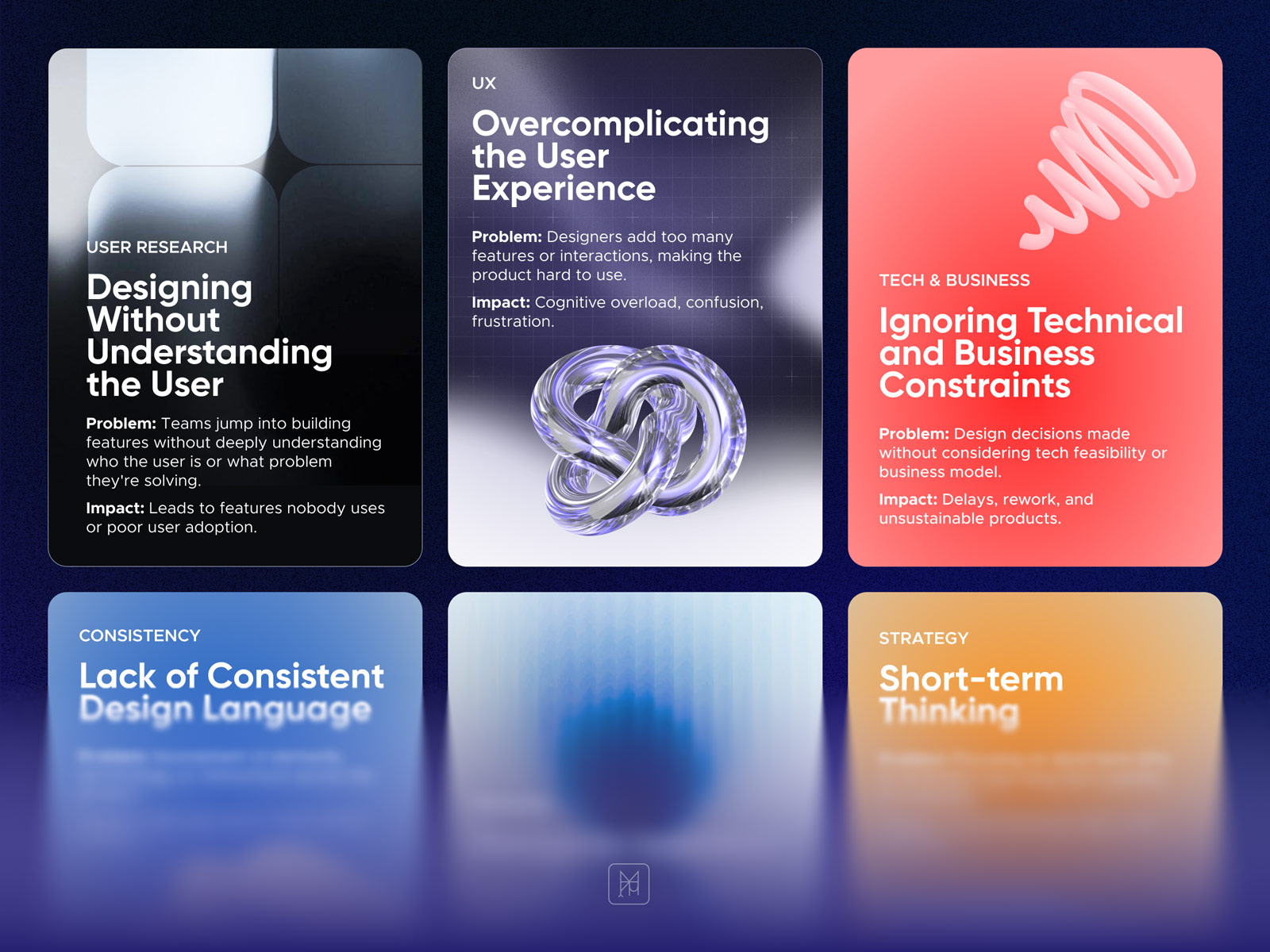The Real Design Traps That Kill Great Products (And How to Avoid Them)


Let's be honest — the design world is constantly evolving, and staying relevant means more than just having the right creative skills. It means knowing how to make products that actually work, attract the right users, and stand the test of time.
I've spent years working across different product and design teams, and I've seen the same patterns play out again and again. Teams rush to ship features, celebrate the launch, and then wonder why the product doesn't stick. The truth? Most failures happen long before launch, in decisions that seemed harmless at the time.
Here's what I've learned about the design traps that quietly sabotage even the most promising projects.
1. Building Without Truly Understanding Your User
This is the big one. You can't design a product that attracts users if you don't deeply understand who they are, what they need, and why they'd choose you over the competition.
Too many teams rely on assumptions. "Our users are tech-savvy millennials who want speed." Okay, but what does speed mean to them? What are they trying to accomplish? What makes them feel wealthy in terms of experience — not just financially, but emotionally, socially, intellectually?
The fix: Get obsessed with research. Talk to real people. Watch them use your product (or your competitor's). Make user understanding a non-negotiable part of your design process, not an afterthought.
2. Overcomplicating the Experience
Here's a hard truth: complexity doesn't make you look smart. It makes your product confusing.
I constantly see designers (myself included, early in my career) try to cram every possible feature into the interface. We think more options = more value. But users don't want options — they want clarity. They want to achieve their goal without thinking too hard.
The fix: Practice ruthless simplicity. Every element should earn its place. If you can't explain why something is there in one sentence, it probably shouldn't be.
3. Ignoring Tech or Business Constraints
Creative freedom is beautiful, but designing in a vacuum is a recipe for frustration. Your brilliant design concept means nothing if engineering can't build it in a reasonable timeframe, or if the business model can't support it.
The most successful designers I know are the ones who understand that constraints aren't creative killers — they're creative guides. When you're aligned with what's technically feasible and commercially viable, you can make designs that actually ship.
The fix: Loop in engineers and stakeholders early. Learn to speak their language. Ask about limitations before you fall in love with an idea.
4. Inconsistent UI or Design Language
Nothing screams "amateur hour" louder than a product that looks like it was designed by five different people who never talked to each other.
Consistency builds trust. When buttons behave the same way across screens, when colors mean the same things, when spacing follows a system — users feel confident. They know what to expect. That predictability is what allows them to focus on their actual goals instead of figuring out your interface.
The fix: Build and maintain a design system. Even a simple one. Document your patterns, components, and guidelines. Make it a living resource that the team actually uses.
5. Designing in Silos
Great design doesn't happen in isolation. If you're only talking to other designers, you're missing critical perspectives that could make or break your product.
The best projects I've worked on had designers, developers, product managers, and even marketing folks collaborating from day one. When everyone's aligned on the vision and constantly sharing feedback, the work gets stronger. You attract better ideas. You catch problems early.
The fix: Break down the walls. Set up regular cross-functional reviews. Make design a team sport, not a solo performance.
6. Thinking Short-Term Over Scalability
Quick wins feel good, but they can cost you later. Designing only for today's needs — without considering how the product might evolve — creates technical debt and design debt that becomes expensive to fix.
Will this design system support new features? Can this information architecture grow with more content? Are we building patterns that can scale, or are we painting ourselves into a corner?
The fix: Always ask "what's next?" Think in systems, not screens. Design foundations that can adapt as the product grows.
The Meta-Pattern: Skills + Strategy
Here's what ties all of this together — being a successful product designer isn't just about having sharp creative skills. It's about being strategic. It's about understanding that every design decision is a business decision, a technical decision, and a user decision all at once.
The designers who thrive are the ones who can constantly balance all of these forces. They make beautiful work that's also practical. They attract opportunities because they deliver results, not just pixels.
So if you want to design products that truly succeed, start by being honest about these traps. We've all fallen into them. The difference between a good designer and a great one isn't avoiding mistakes entirely — it's learning to spot them early and course-correct before they become costly.
Now get out there and make something great.
What design traps have you encountered in your projects? I'd love to hear about your experiences in the comments.